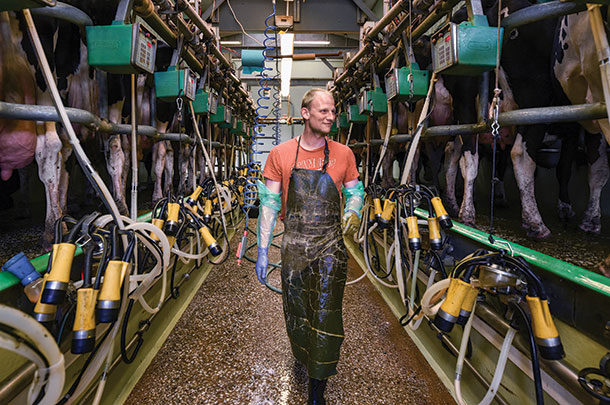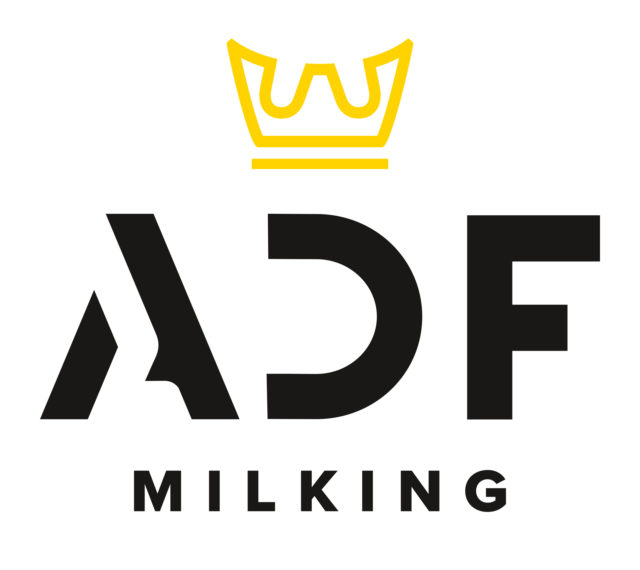However, you may not be aware of just how many factors come into play in order to keep parlour hygiene at its best.
Issues with high somatic cell count (SCC) or mastitis can cost farmers time and money to fix, not to mention milk quality and quantity can be compromised.
Therefore, it is best practice for dairy farmers to adopt a good milking routine in order to sustain low SCC and reduce the risk of mastitis. Three main factors to consider are:
1. Environmental factors
There are some environmental factors farmers can’t control – for example, changes in weather which can change stress levels and cause elevated SCC, even if it just starts raining. However, there are environmental elements that can be monitored to create calmer and more comfortable cows.
Pathways for cattle movement, the milking parlour and stalls need to be kept clean and properly maintained, and bedding areas should be kept clean and dry to prevent bacteria from thriving.
If more than 5% of the herd is heavily soiled with manure on the rear legs and udder (especially on the teats), this is a key indicator there is a problem with maintaining a clean environment for them to live in.
Ensure all cows’ udders are clean between milkings to help maintain good teat condition. Clipping tail hair regularly can also improve the hygiene of your cows.
2. Operators
Operators in the milking parlour should wash their hands thoroughly before milking and wear gloves during milking. They should also only wash cows when they are indoors before milking and only attach teat cups when teats are clean and dry.
Operators should try to avoid splashes or sprays of milk onto hands or clusters and, if possible, identify high-SCC and clinical cows to milk them last in the herd.
If you find reoccurring issues with parlour hygiene, it would be advisable to review and improve milking practices and hygiene levels where possible.
3. Milking parlour
The milking preparation routine is vital in limiting the spread of infection and bacteria. Wiping cows’ teats to ensure they are clean prior to attaching milking units is essential. Teat disinfection reduces new infection rates by 50%.
Using running water and disinfectant solution to remove infected milk from gloves, clusters and other surfaces will ensure bacteria doesn’t spread throughout the milking parlour. Thoroughly cleaning and disinfecting milking equipment can also prevent bacteria being passed from one cow to the next.
Therefore, it is essential to correctly disinfect all teats of all cows before and after each milking. Optimum teat dip coverage ensures your cows are protected against disease and bacteria.
One way dairy farmers can improve parlour hygiene is with the help of automation. Automating a conventional existing parlour by sanitizing liners between cows can reduce the spread of infection, as well as automating the dipping process to ensure it’s done correctly and in a timely manner.
This automation will free up time for the operators to do a better job of the teat preparation routine and ensure a good let-down to help with flows and teat-end condition, which can also reduce the chance of infection taking place after milking.
Standardizing the milking routine and training your staff thoroughly can help ensure the best job gets done no matter who is milking.
Expected results
Improved herd health
Following best practices for excellent parlour hygiene will result in fewer clinical cases of mastitis and lower SCC. Improved cow health saves money, increases milk yield and saves time.
Reduction in antibiotic use
As the health of the herd improves, fewer cows will need antibiotic treatment which, in turn, saves money on expensive vet bills. Ensuring the whole herd is healthy all of the time means dairy producers can milk every cow efficiently and effectively, saving time in the milking parlour.
Improved cow throughput
In a clean, hygienic milking parlour, cow traffic runs smoothly, maximizing throughput and milk let-down. It also minimizes costs per litre of milking without the need for intensive labour.
By reducing the milking workload, it allows operators more time to concentrate on milking cows and therefore improve the milking routine.
Better milk quality
As SCC reduces, milk quality and quantity will improve. Manufacturers of quality dairy products have particularly high standards when it comes to the milk they use in their products, so starting with milk of the highest quality is a necessity.
Overall, there are lots of factors that can affect the hygiene of a milking parlour, be it environmental issues, milking preparation routines or the cleanliness of operators.
Managing these areas of a dairy farm correctly and efficiently is in a farmer’s best interest, as the benefits are endless. Not only will you see improved cow health and reduced SCC, but milk quality and quantity will improve.
Less milk being thrown away means you’ll generate more revenue from selling larger quantities of quality milk. ![]()
PHOTO: Many factors come into play in order to keep parlour hygiene at its best. Photo courtesy of ADF Milking.

-
Natalie Kohn
- Senior Marketing Executive
- ADF Milking
- Email Natalie Kohn











